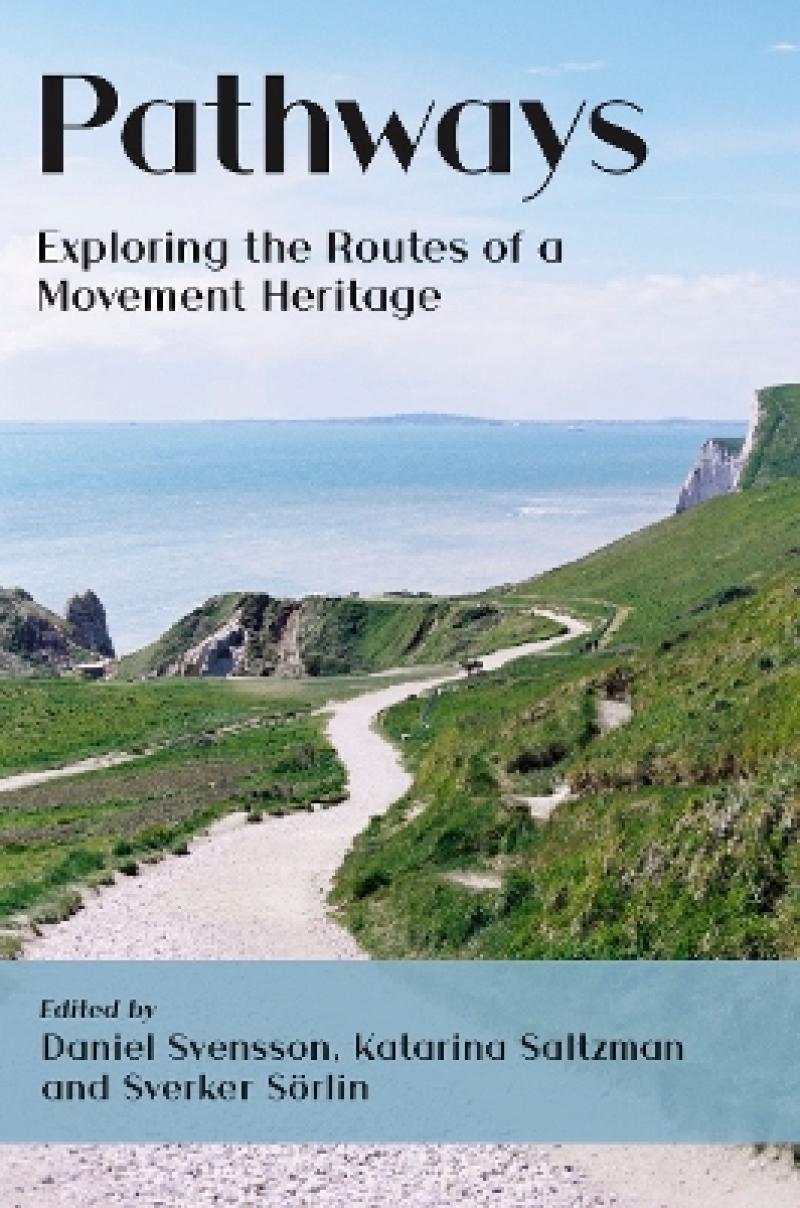PATHWAYS TO THE PAST, AND THE FUTURE
Trails and paths are pathways to the past - and serve as a physical and cultural infrastructure of human memory. While they lead the way forward for anyone out walking, they also point backwards, towards history. Walking has been a common denominator for human life everywhere, at all times. While other forms of mobility have grown in importance and changed our societies in dramatic ways, most of us still depend on walking in our daily life. The massive number of human steps throughout history has created a rich and widespread network of trails that cross the globe and connect places. It has also resulted in a vast immaterial heritage through literature, art and music about walking. Paths and trails accommodate both the material and the immaterial, and challenge not only conventional heritage management but also the very essence of the nature/culture divide.
In the Anthropocene, traces of people's movements can be regarded as a distinct kind of cultural heritage, a 'movement heritage' that is dependent on continuous use or memory work to remain. It also points to historical and current forms of land use that is sustainable in the most basic meaning of the word, i.e. that these activities can be and de facto has been practiced over long periods of time without causing large- scale environmental degradation. Few other forms of human mobility can make similar claims.
The volume formulates an expansion of the landscape heritage through one of its most defining practices, movement by foot. This heritage is physical in the shape of paths, trails and effects on vegetation, but it is also a local memory landscape or life world with great significance, and it is increasingly digital as it appears in computer games and mobile images. It engages in dialogue around several cases in different regions that show how trails and paths can be, and have been, a resource in and for the heritage sector and for sustainable landscape management. It analyses how this movement heritage is articulated, and what type of historical, literary, and mediated accounts that are used in the process.
Chapters deal with narrative aspects of walking and trails, through literature, sound and art, often way beyond the beaten track; focus on digital walking, in computer games and walking simulators; zoom in on walking and trails as heritage and as tools for sustainable development; and demonstrate how paths are also part of an endless co-creation of heritage, as we go.
Les mer
Deals with narrative aspects of walking and trails, through literature, sound and art, often way beyond the beaten track; fdigital walking, in computer games and walking simulators; walking and trails as heritage and as tools for sustainable development; how paths are also part of an endless co-creation of heritage, as we go.
Les mer
Introduction
Movement Heritage and Path Dependence: Layering the Past - Daniel Svensson, Katarina Saltzman, Sverker Soerlin
Section I - Past Preconditions of Paths
Footpaths in England: Notes Towards a Radical History - Paul Readman
Delineating the Landscape: Planning, Mapping and the Historic Imaginings of Rights of Way in Twentieth-century England and Wales - Clare Hickman and Glenn O'Hara
Appropriated Heritage? Access Campaigns, Trespass, and Local Rights in Early-twentieth Century Upland England and Austria - Ben Anderson
Hefting the Land: A Locative Heritage of Hooves and Feet - Karen Lykke Syse
'Following in the Footsteps of History': Sixteen Multimedia Itineraries through the First World War Sites in the Stelvio National Park and Adamello Park (Italy) - Stefano Morosini
Section II - Off the Beaten Tracks
Archipelagic Paths: Narratives, Heritage and Community in Public Trail Walking on the Aland Islands - Susanne OEsterlund-Poetzsch
Fusion: Co-created Heritage in Stories from the Camino de Santiago - Camilla Brudin Borg
Tracing Memories: The Guided Trail as an Aid to Cultural Memory in Artworks by Janet Cardiff - Laura Bertens
Walking and Worlding: Trails as Storylines in Video Games - Finn Arne Jorgensen
Attentive Walking: Encountering Mineralness - Petra Lilja
Section III - Searching for New Path Heritage
Kodagu Walking Trails and Indigenous Heritage Making: A Bioregional Study - Subarna De
Heritage Trails: Pathways to Sustainable Development Goals - John Martin, Joane Serrano, Jacqueline Nowakowski and Dominica Williamson
Walking on Terrils. Ruderal Ecologies and Toxic Heritage in Wallonia, Belgium - Daniele Valisena
Walking, Remembering and Enunciating the Place: Jewish-Israeli Memorial Trails in Nature - Maria Piekarska
Walking the Kalderimi: Embodied Knowledge and Heritage Narratives in a Participatory Building Workshop at Zagori (NW Greece) - Faidon Moudopoulos Athanasiou and Ionas Sklavounos
Forming Paths within Post-industrial Landscapes - Benjamin Richards
Les mer
Produktdetaljer
ISBN
9781912186556
Publisert
2022-07-28
Utgiver
White Horse Press
Høyde
229 mm
Bredde
152 mm
Aldersnivå
UP, 05
Språk
Product language
Engelsk
Format
Product format
Heftet
Antall sider
300
